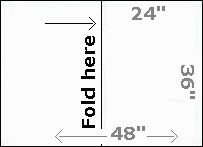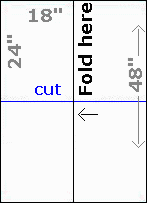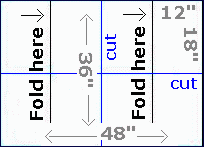To Edward FitzGerald
Edward FitzGerald (1809-1883) was a scholar whose 1859 translation of Omar
Khayyàm's twelfth-century Persian poem, the Rubàiyàt, had enjoyed
enormous popularity and had earned its translator a reputation as something of a poet himself.
The poem contains the famous lines about "A Jug of Wine, a Loaf of Bread--and Thou" (46) and
"The Moving Finger writes, and, having writ/Moves on" (281-282).
A note in the
Norton Anthology of English Literature, Sixth Edition, explains that "In 1861
FitzGerald wrote to a friend: 'Mrs. Browning's death is rather a relief to me, I must say:
no more Aurora Leighs.... She and her sex had better mind the kitchen and the
children.' Browning discovered the passage among FitzGerald's posthumously published letters
and in white heat wrote this rejoinder, which was published in the Athenaeum." The
date of the poem's publication--and presumably of the encounter--was 1889.
I chanced upon a new book yesterday;
I opened it, and, where my finger lay
'Twixt page and uncut page, these words I read--
Some six or seven at most--and learned thereby
That you, FitzGerald, whom by ear and eye
She never knew, "thanked God my wife was dead."
Aye, dead! and were yourself alive, good Fitz,
How to return you thanks would task my wits.
Kicking you seems the common lot of curs--
While more appropriate greeting lends you grace,
Surely to spit there glorifies your face--
Spitting from lips once sanctified by hers.
|
Note: That "uncut page" is another of Browning's devastating put-downs. What he means
by the term is a book that no one has ever bothered to read. In the nineteenth century
and at the beginning of the twentieth, you could tell this by looking at the edges of the
pages. Here's how:
Below I've furnished diagrams of three different sizes of book. These terms refer to the
number of times a sheet of paper has been folded to produce the finished book; in fact, the
actual size in inches can vary, depending on the size of the original sheet of paper used.
For demonstration purposes, let's assume a sheet of paper that is 48"x36". This makes the
individual divisions larger than they would normally be, but the number is easy to divide.
The average of each of the books below would be about half of the size given here.

Folio: This is the largest size, consisting of one sheet of paper folded in half.
Since the sheet is 48"x36", the book is 24"x 36". We would usually refer to a folio volume as a "coffee table book," since they're too big to fit in most bookshelves. If you're looking for
a folio volume in the library, you'll usually have to go to a special section labelled
"oversized." |

Quarto: A quarto volume is a folio cut in half. The book is now 18"x 24". Today we
have machinery that cuts the paper along the blue line, but our predecessors weren't so
privileged and they were expected to do their own cutting after they had purchased the book.
If the blue edge isn't cut for you, you get a fold that runs across the
exposed edge along the bottom or top of the book so you can't flip the pages. If you can't
visualize this, try it with a sheet of notepaper. The inside of every other page is stuck
to the inside of the page next to it along the bottom or top. Readers would
slice the edges with a penknife as they went along.
|
 Octavo: An octavo is a quarto volume folded in half. Obviously, this is
a smaller and less expensive book because you now can get eight pages rather than two, as you
would with a folio, or four, as with a quarto. Illustrations and such have to be smaller, of
course. You save on ink and paper!
Octavo: An octavo is a quarto volume folded in half. Obviously, this is
a smaller and less expensive book because you now can get eight pages rather than two, as you
would with a folio, or four, as with a quarto. Illustrations and such have to be smaller, of
course. You save on ink and paper!
The octavo size was the size of choice for popular, moderately-priced books, and I'll bet that
book of letters was an octavo.
Do you see the problem with the folds in the octavo volume? Now we need to
make cuts in two directions, which means that the top (or bottom) and the side of the
book have folded pages facing outward. Every other page is completely bound up and impossible
even to peek at unless you slice its edge. |
There is an even smaller volume that has been folded in half again, called a duodecimo, but I
won't go into that...
So to avoid making a long story even longer, I'll finish this note by saying that Browning is
implying that nobody would want to read FitzGerald's letters anyway, or even if they started
they didn't get very far before they lost interest and stopped bothering to cut the pages free.
Now, wasn't that educational?
Back to the poem
Note 2: A "cur" is a name for an ill-bred, ill-behaved dog.
And you thought this
note was going to be another long one!
Back to the poem
Back to the Browning page


 Octavo: An octavo is a quarto volume folded in half. Obviously, this is
a smaller and less expensive book because you now can get eight pages rather than two, as you
would with a folio, or four, as with a quarto. Illustrations and such have to be smaller, of
course. You save on ink and paper!
Octavo: An octavo is a quarto volume folded in half. Obviously, this is
a smaller and less expensive book because you now can get eight pages rather than two, as you
would with a folio, or four, as with a quarto. Illustrations and such have to be smaller, of
course. You save on ink and paper!